Clem's Newfoundland Salt Cod Fish Cakes
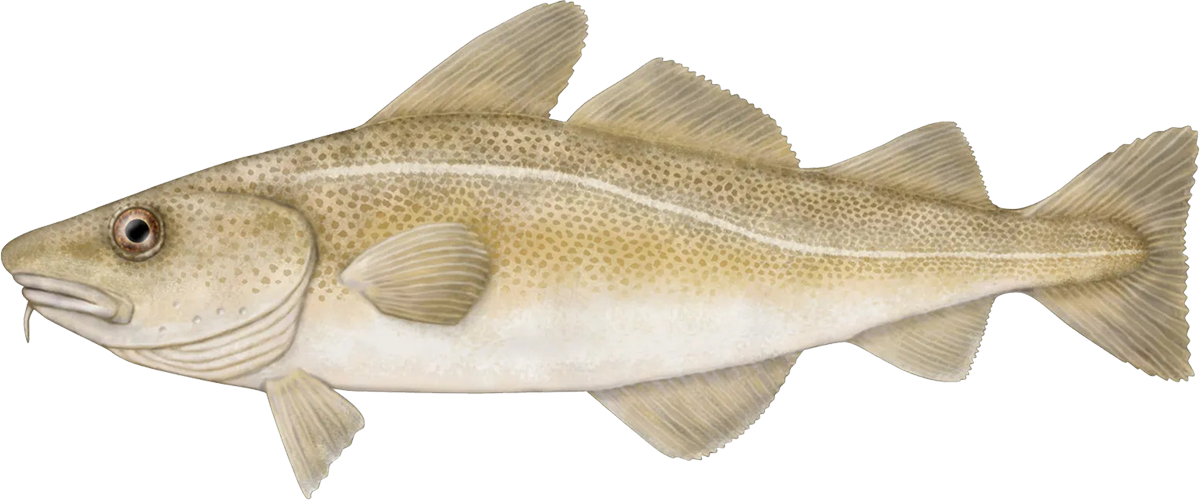
The Atlantic Cod (Gadus
morhua)
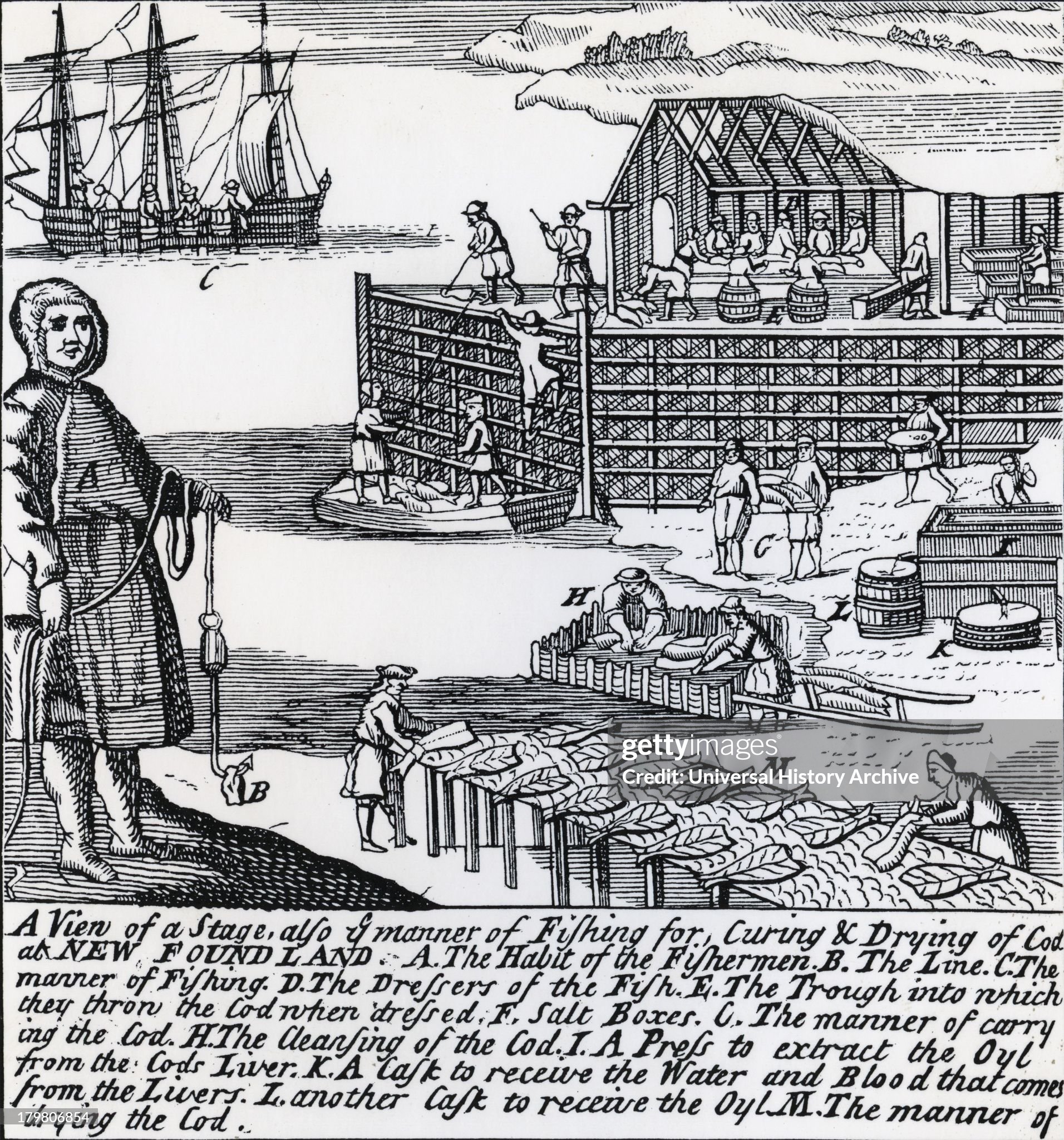
Salting and drying of cod at Newfoundland; 1738
1. Ingredients
- Salt Cod (Norwegian).
0.85 kg.
You can try other fresh fish instead of Salt Cod if you prefer or cannot get the latter.
I have made fish cakes with fresh Deep Sea Cod before.
- 1 small onion (finely chopped).
- A knob of butter and some neutral
cooking oil.
- White Pepper to taste.
- Optional (ignore for a halal
version):
Some 50 g of Streaky Bacon.
- About 0.85 kg of potatoes (or less
as preferred).
- 1 - 2 teaspoons of Summer Savoury.
This is not easy to get around my place and so I used thyme which is often used as substitute.
- 1 egg; beaten.
- Optional: Flour; breadcrumbs (panko
or regular) for coating the cakes prior to frying.
- Condiments.
2. Method
Desalting the Salt Cod
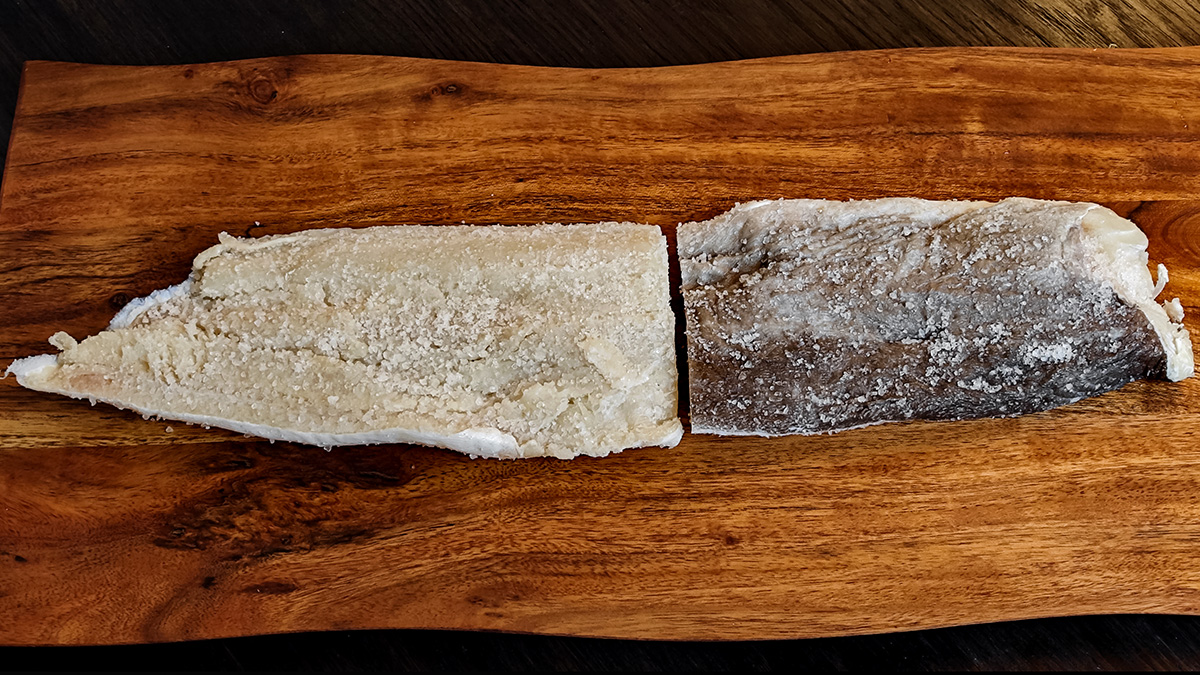
Salt Cod as purchased at the Sydney Fish Market.
I cut the fillet into two and flipped one half to show both surfaces of the fillet.
- Wash all surface salt from the
fillet.
- Immerse the fillet in plenty of
fresh water and leave for at least 18 hours in the
refrigerator.
Change the water several times during the desalting.
As a check, you can take small pieces of the fillet and cook them to test for level of saltiness remaining during the desalting.
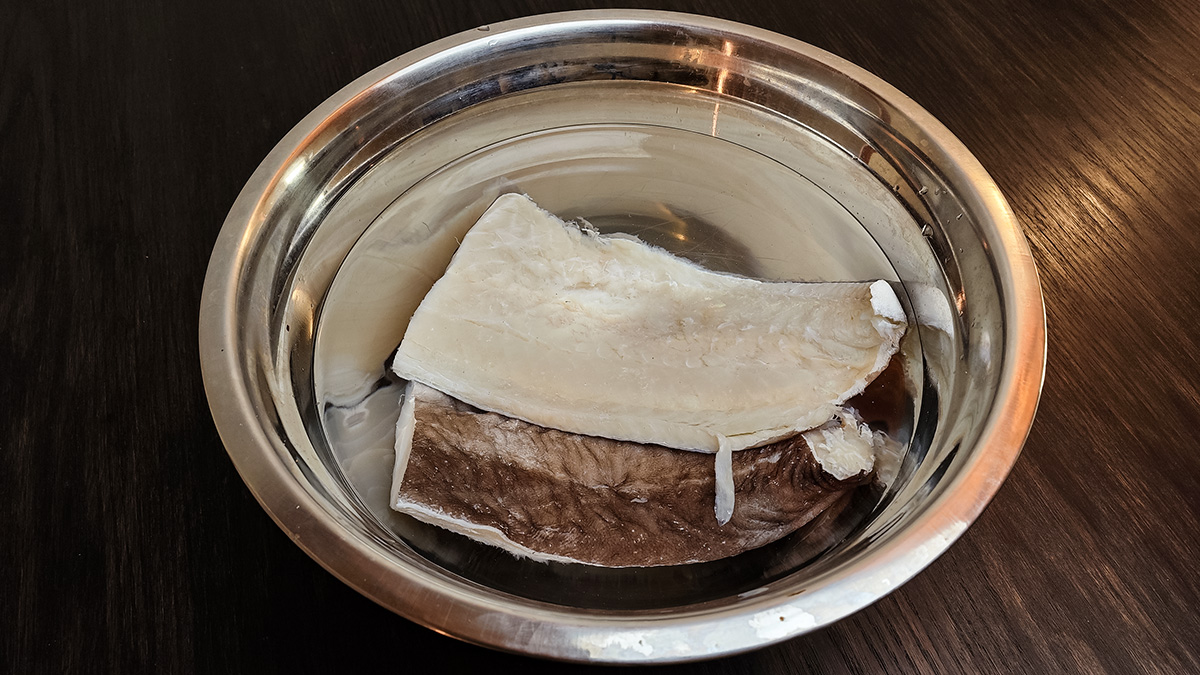
The Salt Cod fillet after
desalting in several changes of fresh water over some 18 hours
- At the end of the desalting
period, thoroughly wash the fillet and set it in an amount
of water that covers it in a sauce pan.
If you are someone concerned with fishy smells, you can add some milk to this water.
Water will help reduce any fishy odour which is caused by the compound trimethylamine (TMA, a breakdown product of fish deterioration). It is the protein casein in milk which binds with TMA; the compounded TMA is then removed when the fish is retrieved from the milk in which is was soaking.
- Simmer the fillet for some 20 to
30 minutes.
- After cooking, remove the fillets
and flake them
using either fingers (after the fillet has cooled) or a
suitable implement.
- Set the flakes aside.
- Cube some 0.85 kg of potatoes.
I used this amount for 1:1 ratio of fish to potatoes because the cod was still salty to taste even after desalting for 18 hours (perhaps 24 hours would have been better).
Traditionally the ratio is 3:1 fish to potato (it is after all, fish cake and not potato cake).
- Simmer the potatoes for some 30
minutes until they fall off a fork after it is poked and
lifted with the latter.
- When cooked, drain well and add the potatoes to the fish
flakes.
Try not to use wet potatoes as this will make the cakes too wet for frying well.
- Add 1 -2 teaspoons of the herb
(thyme or Summer Savoury).
- Fry one finely chopped onion in
some butter and a neutral oil until they are translucent.
Add the fried onions to the fish and potatoes.
- Your choice:
- Fry some 50 g of Streaky Bacon
until enough oil is rendered from the bacon.
Remove the oil and add it to the fish, potatoes, and onion.
OR
- You can use a knob of butter in
place of the bacon oil.
- Fry some 50 g of Streaky Bacon
until enough oil is rendered from the bacon.
- Now gently mix all the ingredients
for the cake until everything is incorporated.
Taste the mix and adjust with condiments as you please.
The final addition is a beaten egg (this is the binder); mix this in.
- To form each cake, take a handful
(your choice of amount) and shape it into a ball.
Then flatten this ball into a patty and you are ready for frying . . .
. . . unless you wish to coat the surface of each patty with breadcrumbs or flour before they are fried.
You should note that traditional Newfoundland fish cakes are apparently not crumbed.
Crumbing will help induce a crispier cake exterior
- To fry, you can use just a neutral
oil, or oil plus some butter.
Use medium heat so that the patties are not burnt before the interiors have heated up (all ingredients except the egg binder is already cooked).
Let the patties come to a golden brown.
- Serve while still hot.
My sides were pickled dill, some salad greens, a slice of lemon and tartar sauce.
ENJOY!
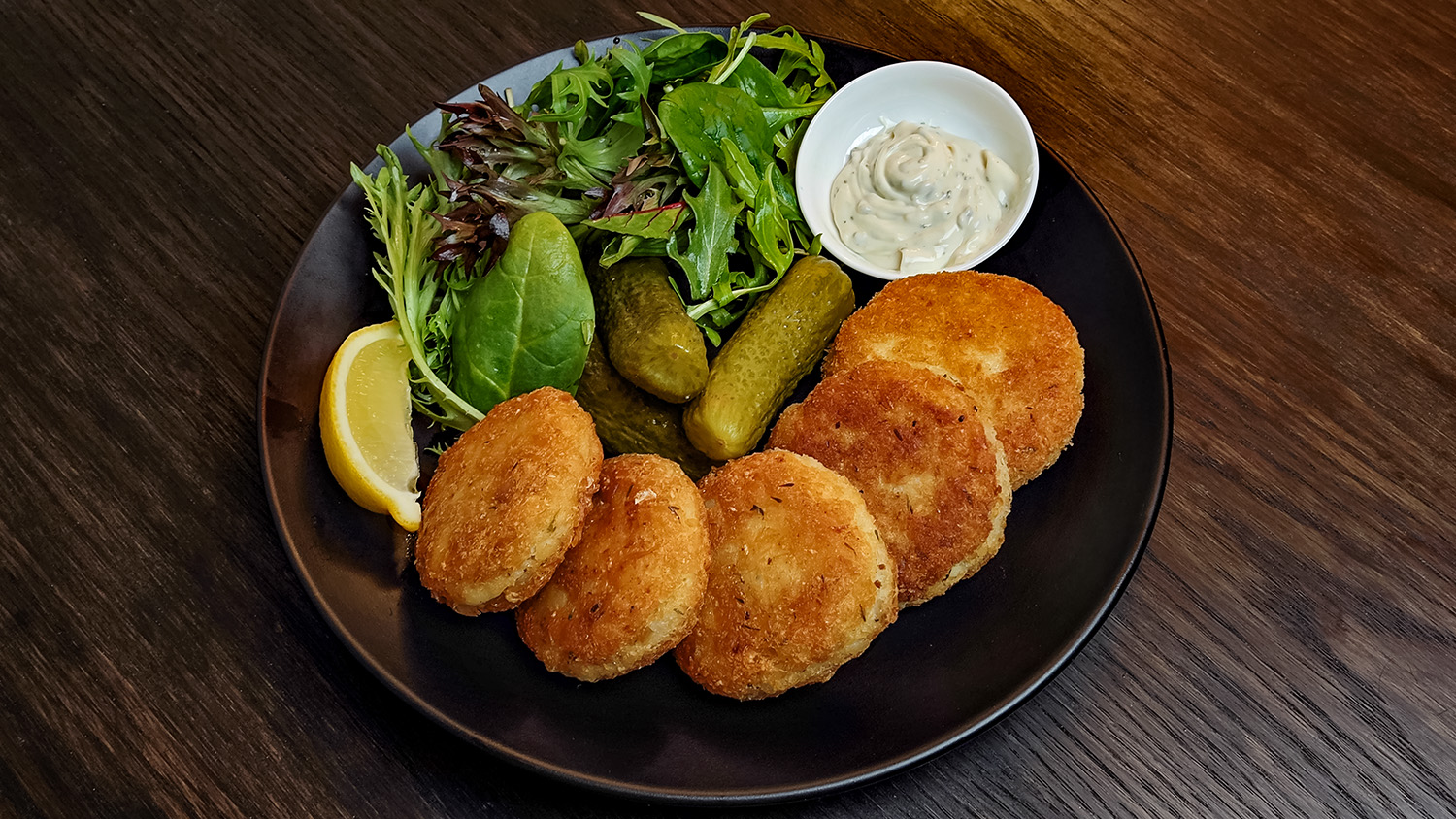
Clem's Newfoundland Salt Cod Fish
Cakes.
The three patties on the left were not coated while the
right-most was panko breadcrumbed and the the one next to the
left it was regular breadcrumbed.
All my cooking (some without recipes) can be found here (click on each photo to go to that dish's page):
http://clemkuek.com/photoalbum/photo696.html
Video presentations can be found here:
Earlier days: https://youtu.be/BWyHY1h9Y5s
More recently: https://youtu.be/cph2XmwuQLU
30 August
2025
Created by Clem Kuek
